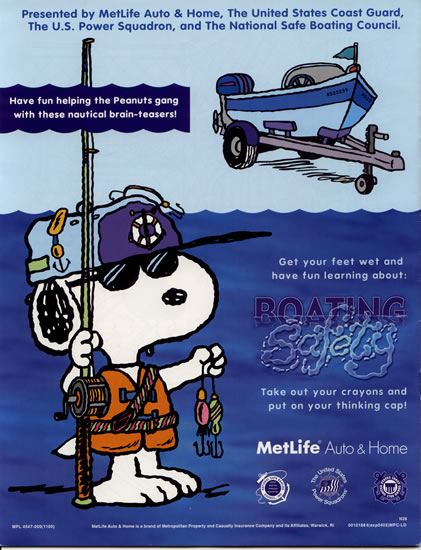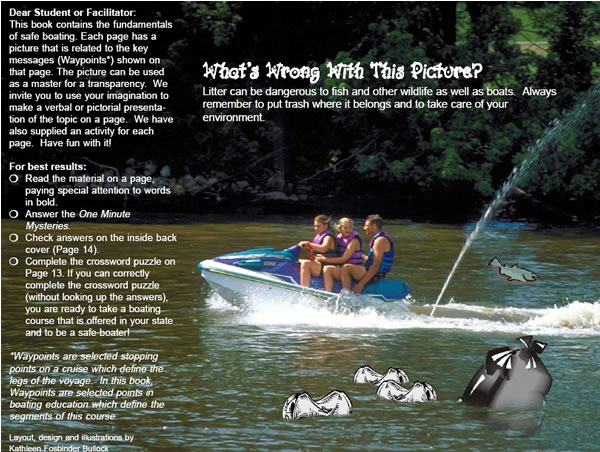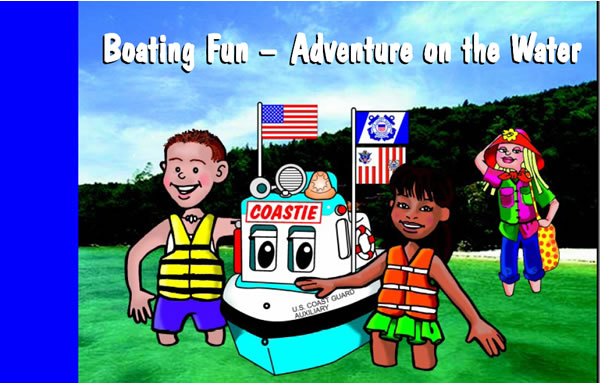Coloring Books
Coloring
Books
Custom Coloring Book
Here's a coloring book that has been around for a few years, but is still
pretty good. Download and customize this coloring book for your squadron.
MetLife
Coloring Book

Click here for an animated power
point (zipped) of the Met Life Coloring Book.
MetLife
has continued to offer a Coloring and Activity Book on Boating Safety
for
children
at
no charge
to our
members.
It is
packed
full of
puzzles, word searches, dot to dot and coloring activities for young
children as portrayed by the Schulz Peanuts(c) characters. The coloring
book was
created in conjunction with the USPS Education Department's "Boating
Safety for Kids" instructional program. Squadrons may secure copies
by contacting Headquarters (item #1130-001) and paying for the shipping
and handling.
Suggestions for Use:
- The Coloring Book is an excellent boat show giveaway item where the intent is to target kids of non-members to help create awareness in their parents and/or grandparents of USPS.
- The book can also be distributed
at
Boating/Boat Smart Classes where students bring their children.
Waypoints: (pdf format) (courtesy
of USCG)
 This
book contains the fundamentals of safe boating. Each
page has a picture related to the key messages or "waypoints" shown on
that page.
This
book contains the fundamentals of safe boating. Each
page has a picture related to the key messages or "waypoints" shown on
that page.
Click on the image for a larger view
Boating Fun: (pdf format)
(courtesy
of USCG)
(Click on the image for a larger view)

This
story and activity book introduces basic precautions for safety in and
around water and boats. We hope that you will share
it with your child and talk about the safety messages in it. Of all the
messages in the book, the six most important are:
1. A child should: know how to swim; swim with a buddy; and always swim
under adult supervision.
2. A child should always wear a PFD (personal flotation device, also
called a life jacket) when on a boat.
3. The equipment and people taken in a boat should be placed so that
the boat is balanced.
4. People should always stay seated in a boat when it is being operated.
5. There should always be a lookout to find dangers in the water.
6. If the boat capsizes, people should always stay with the boat and
climb onto it if they can.